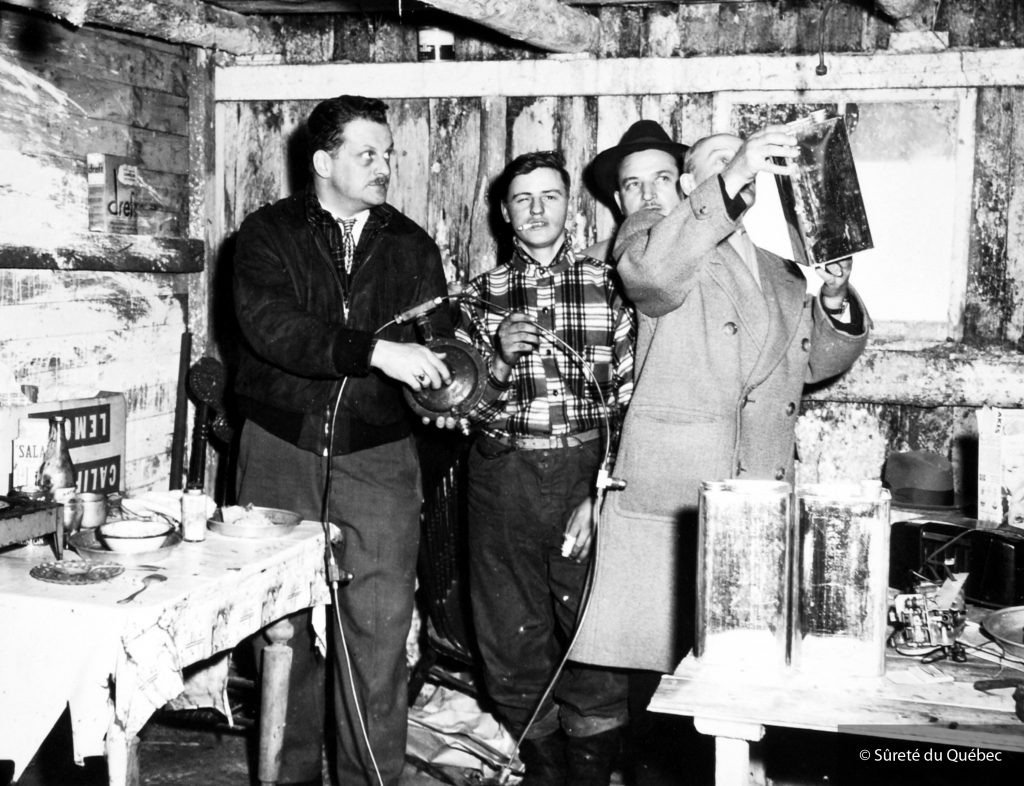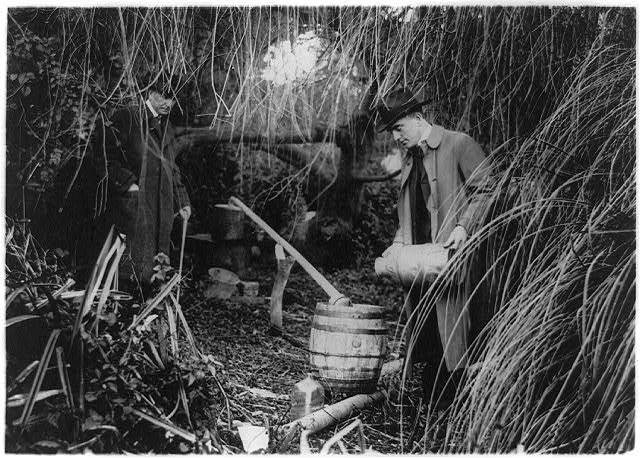The birth of organized crime
The dry regime in the United States would have even more harmful consequences. At that time, all the U.S. states were grappling with problems of corruption and smuggling. Organized crime, with which the famous and evocative name of Al Capone was associated, was also on the rise. In Canada, nearly every province passed Prohibition laws between 1915 and 1918. Canada thus became mostly “dry”, with the exception of Quebec which quickly became a hub for alcohol smuggling.
Cross-border crime was increasing and affecting a growing number of police forces. Around 1925-1926, it quickly became clear to the Liquor Police that cross-border cooperation was the solution. It was consequently not uncommon in Quebec to see Liquor Police officers conducting their investigations alongside those of New York or Maine State Police, and vice versa in the United States.
An example of “border operations” shows the extent of existing crime which led to the establishment of a federal commission of inquiry. In 1924, Liquor Police inspectors searched a boat on the St. Lawrence River, the Tremblay barge. It was carrying 24,000 gallons of liquor to the United States. During the course of the raid, a Canadian customs officer, J.A.E. Bisaillon, mysteriously appeared and took possession of the goods, alleging a violation of federal law. After an investigation, the Liquor Police discovered that Bisaillon had sold the alcohol and deposited $ 69,000 in his own bank account… a fortune in those times. Several charges were laid against Bisaillon and other federal officials, and a federal commission of inquiry, the Stevens inquiry, ensued in 1926. Serious allegations of corruption were made against federal police and politicians, revealing the extent of organized crime’s influence in Quebec.



